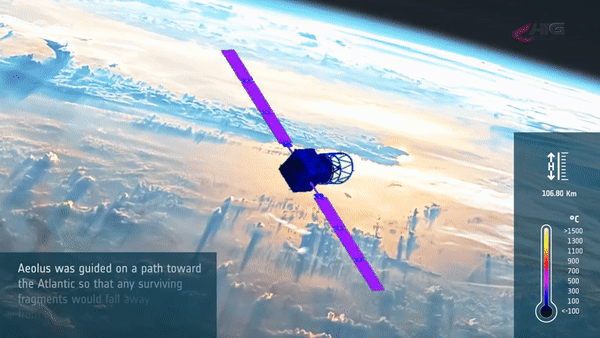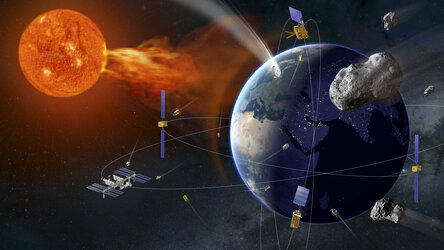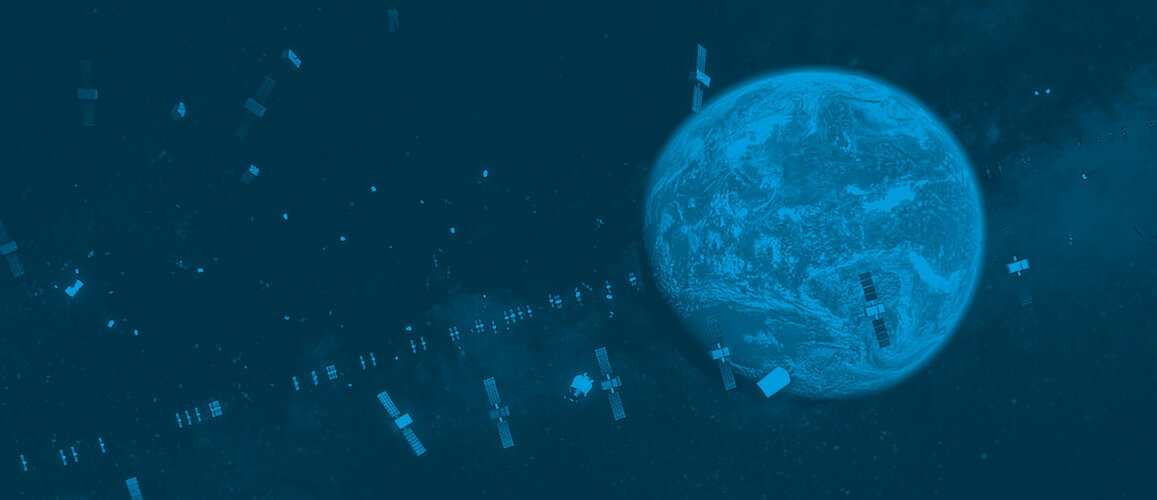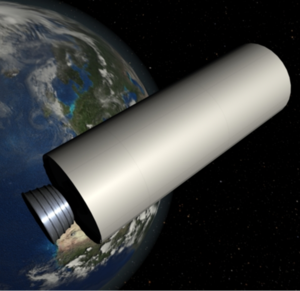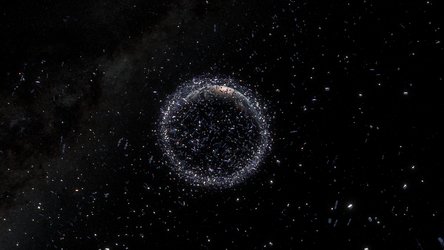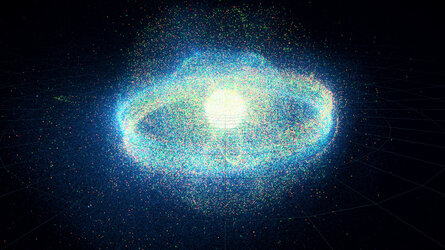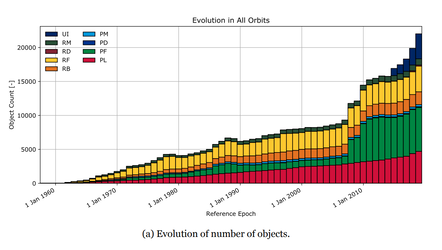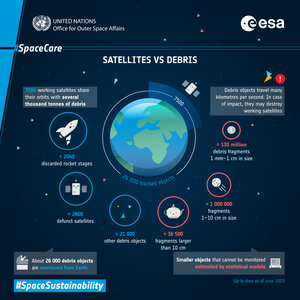ESA’s Space Environment Report 2023
In brief
Our planet is surrounded by spacecraft carrying out important work to study our changing climate, deliver global communication and navigation services and help us answer important scientific questions.
But some of their orbits are getting crowded and increasingly churning with deadly, fast-moving pieces of defunct satellites and rockets that threaten our future in space.
In 2002, the Inter-Agency Space Debris Coordination Committee (IADC) published the Space Debris Mitigation Guidelines. The measures described in the guidelines set out how to design, fly, and dispose of space missions in ways that prevent the creation of further debris. They were a major step for the protection of our important orbits and have served as the baseline for space policy, national legislation and technical standards for two decades.
Since 2016, ESA’s Space Debris Office has published an annual Space Environment Report to provide a transparent overview of global space activities and determine how well these and other international debris-reduction measures are improving the long-term sustainability of spaceflight.
Below is an overview of the 2023 report.
The basics
- Earth’s orbital environment is a finite resource.
- More satellites were launched in 2022 than in any year before.
- The number and scale of commercial satellite constellations in certain, economically valuable low-Earth orbits continues to increase.
- Not enough satellites leave these heavily congested orbits at the end of their lives.
- Satellites that remain in their operational orbit at the end of their mission are at risk of fragmenting into dangerous clouds of debris that linger in orbit for many years.
- Active satellites must perform an increasing number of collision avoidance manoeuvres to dodge out of the way of other satellites and fragments of space debris.
- The adoption of space debris mitigation measures is improving, but, given the sheer number of new satellites and amount of existing debris, the rate is still not enough and our behaviour in space appears to be unsustainable in the long term.
In-depth
Continuing trends
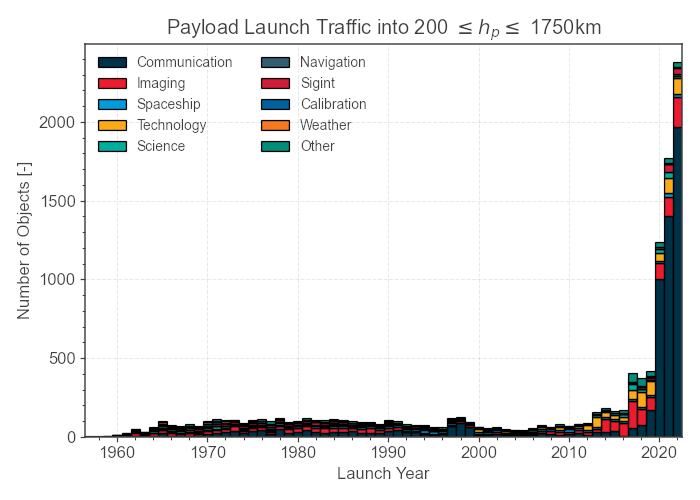
The number of new satellites launched continues to increase year-on-year
2409 new, tracked ‘payloads’ (primarily satellites) entered orbit around Earth in 2022, more than ever before.
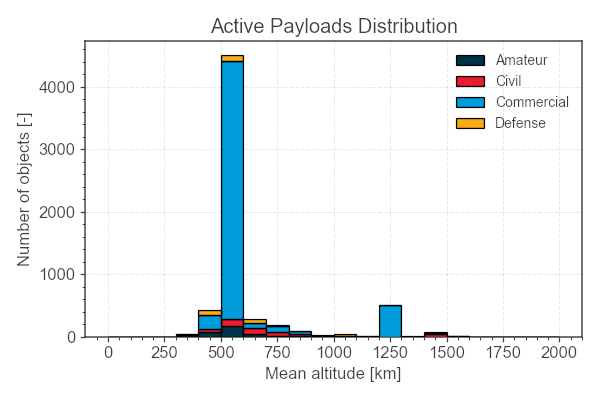
Most new satellites are heading to similar orbits
Space may be unfathomably large, but the regions with economic value can be shockingly small.
The number of new satellites launched last year was dominated almost entirely by those establishing or expanding commercial satellite constellations in low-Earth orbits.
These constellations are launched to provide services such as global communications, but only a narrow band of orbits are suitable for these purposes.
As a result, a collision or fragmentation in these orbital regions would be catastrophic for the rest of the satellites in similar orbits, and for satellites or crewed space vehicles passing through this region on their way to more distant destinations.
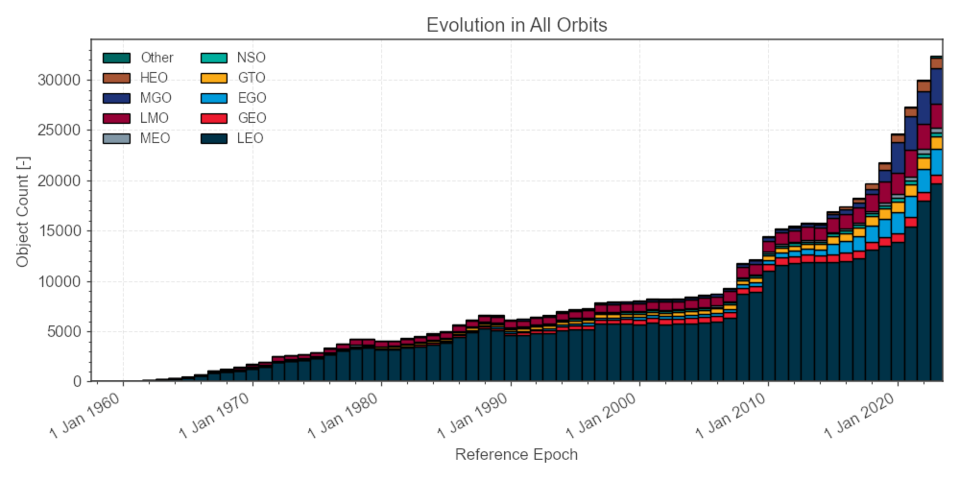
These orbits are the most hazardous
Of the more than 30 000 individual pieces of space debris larger than 10 cm currently identified, more than half of them litter low-Earth orbit (below 2000 km).
This does not include objects that haven’t yet been tracked, or those currently too small to track. Based on ESA models, the total number of objects in Earth orbit larger than 1 cm in size is likely over one million.
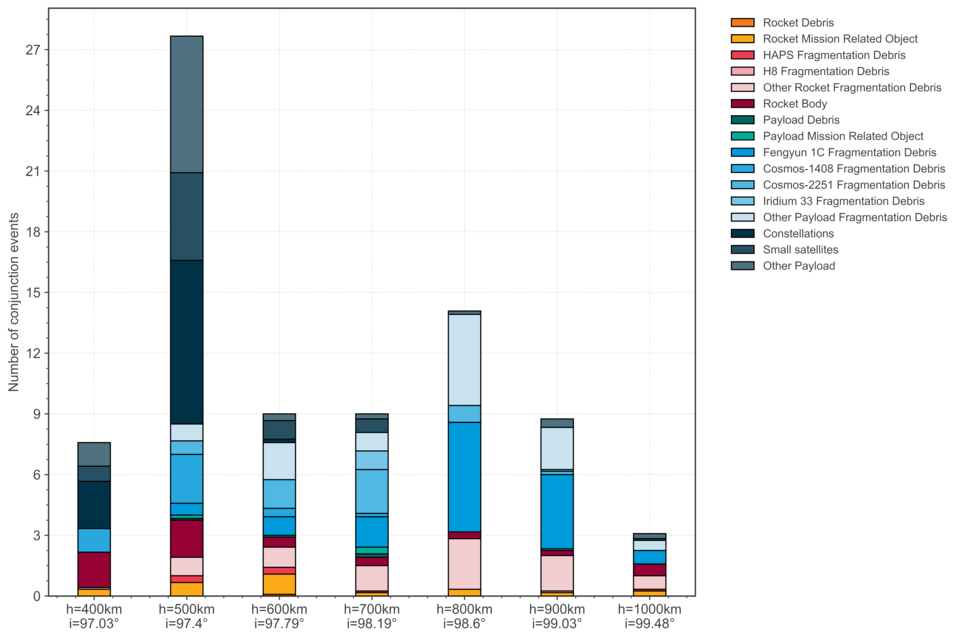
However, due to increasing launch traffic, the average satellite in an orbit below 600 km is actually more likely to have to take evasive action to avoid a collision with another satellite than with a piece of debris.
A possible collision with another operational satellite may be easier to avoid, as, typically, both objects are manoeuvrable, but this requires good coordination and an exchange of data between operators to ensure there are no misunderstandings.
At higher altitudes, satellites are most at risk of colliding with a fragment of debris that resulted from one of a small handful of well-known break up events.
New insights
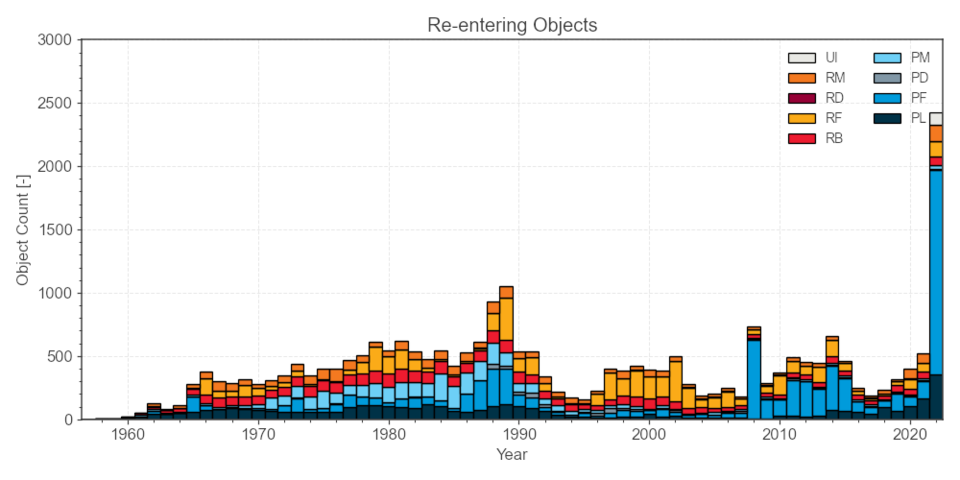
A record number of objects reenter Earth’s atmosphere
A record number of human-made objects fell from space in 2022. This was driven by a large number of falling ‘payload fragments’ (PF), mostly resulting from an anti-satellite test performed in orbit.
However, last year also saw a record number of satellites reenter Earth’s atmosphere.
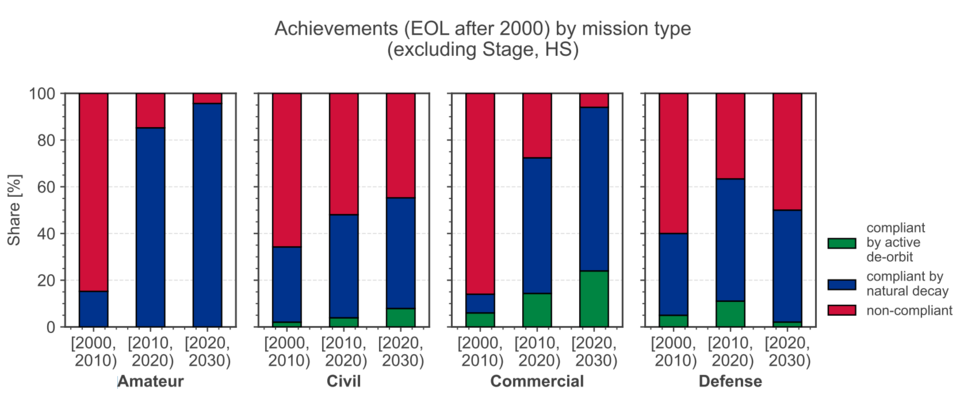
An increasing number of satellites comply with international guidelines
The rising number of reentries is not necessarily a bad thing. Disposing of satellites efficiently is one of the most important things for keeping low-Earth orbits safe.
Space debris mitigation guidelines state that satellites should vacate protected orbits within 25 years after their use has come to an end. This image shows how compliance with this guideline is improving for different types of satellite. Early constellation satellites had very low compliance, for example, while the compliance of those launched this decade is almost 100 %.
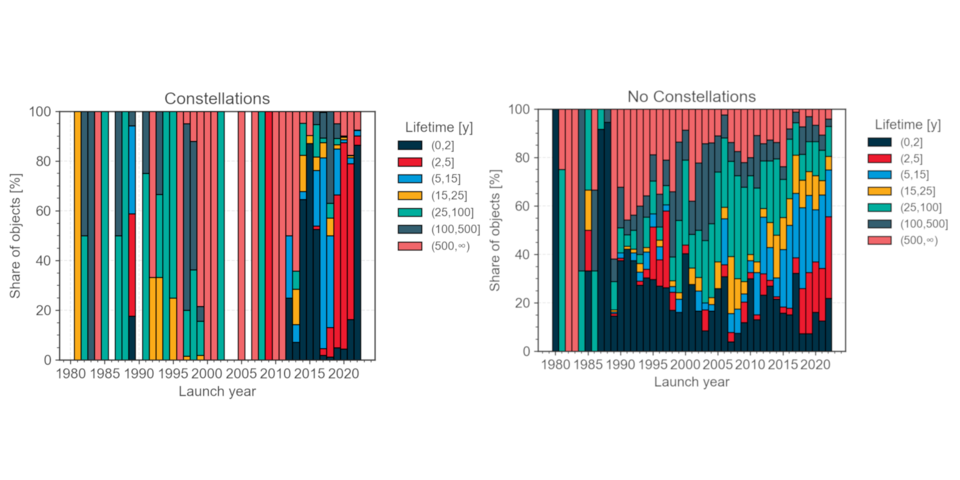
That means reentry numbers are likely to continue to rise
Over 80 % of constellation satellites launched in 2022 were inserted into orbits from which they will decay towards Earth in less than two years once they are no longer operational or if they lose propulsion. The increasing number of satellites reentering Earth’s atmosphere is therefore expected to continue in coming years.
Most non-constellation satellites are inserted into orbits from which the natural decay would occur in less than the maximum of 25 years stipulated by international guidelines and standards. In practice, the introduction of these guidelines has seen orbital activities shift to lower altitudes when compared to 10 years ago.
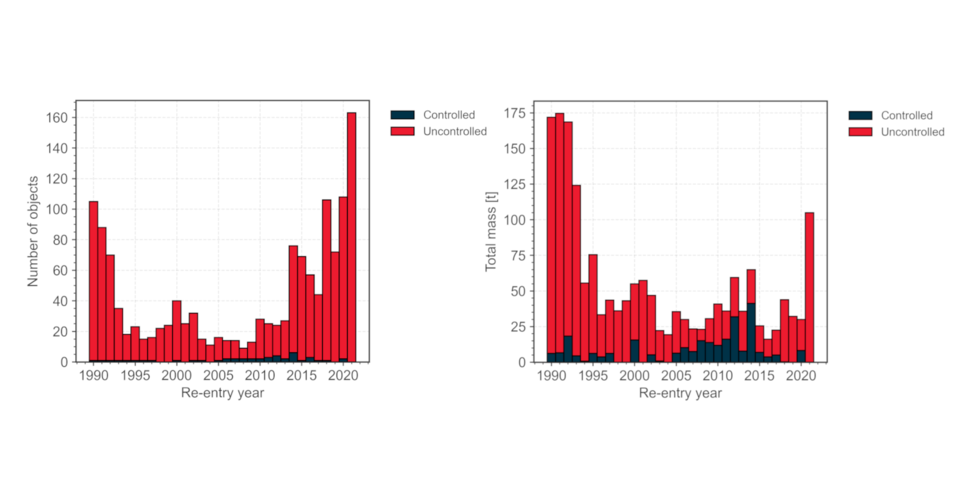
Most reentries are uncontrolled… for now
However, most objects reenter in an uncontrolled manner: they are switched off at the end of their mission and left to fall and burn up in Earth’s atmosphere.
This helps to keep orbits clear of inactive space junk, but the owner has no control over where in Earth’s skies it will break up and where any surviving fragments will land.
Advancing technology, increasing reusability and the implementation and adherence to sustainability guidelines has seen a recent increase in “controlled reentries” for rocket bodies. A controlled reentry allows operators to remove their hardware from protected regions more quickly and with greater control over where, when and how it reenters – and even lands – at the cost of allocating some fuel to do so.
If space debris mitigation guidelines become stricter in the coming years, satellites may also have to vacate protected regions more quickly than they do today and in an even safer manner. One way of achieving this is designing the satellite to perform a controlled reentry at the end of its mission.
But just because an older satellite wasn’t designed to be controlled during its descent through the atmosphere doesn’t mean it’s impossible to do so. In July 2023, teams at ESA’s ESOC mission control attempted a new way of assisting a reentry for an older satellite that can make them safer.
The ESA teams carried out the first “assisted reentry” of its kind as they guided the Agency’s Aeolus satellite to burn up over uninhabited regions in the Atlantic and Antarctica, even though the satellite was designed in the late 1990s with no intention to control it in this way.
Outlook

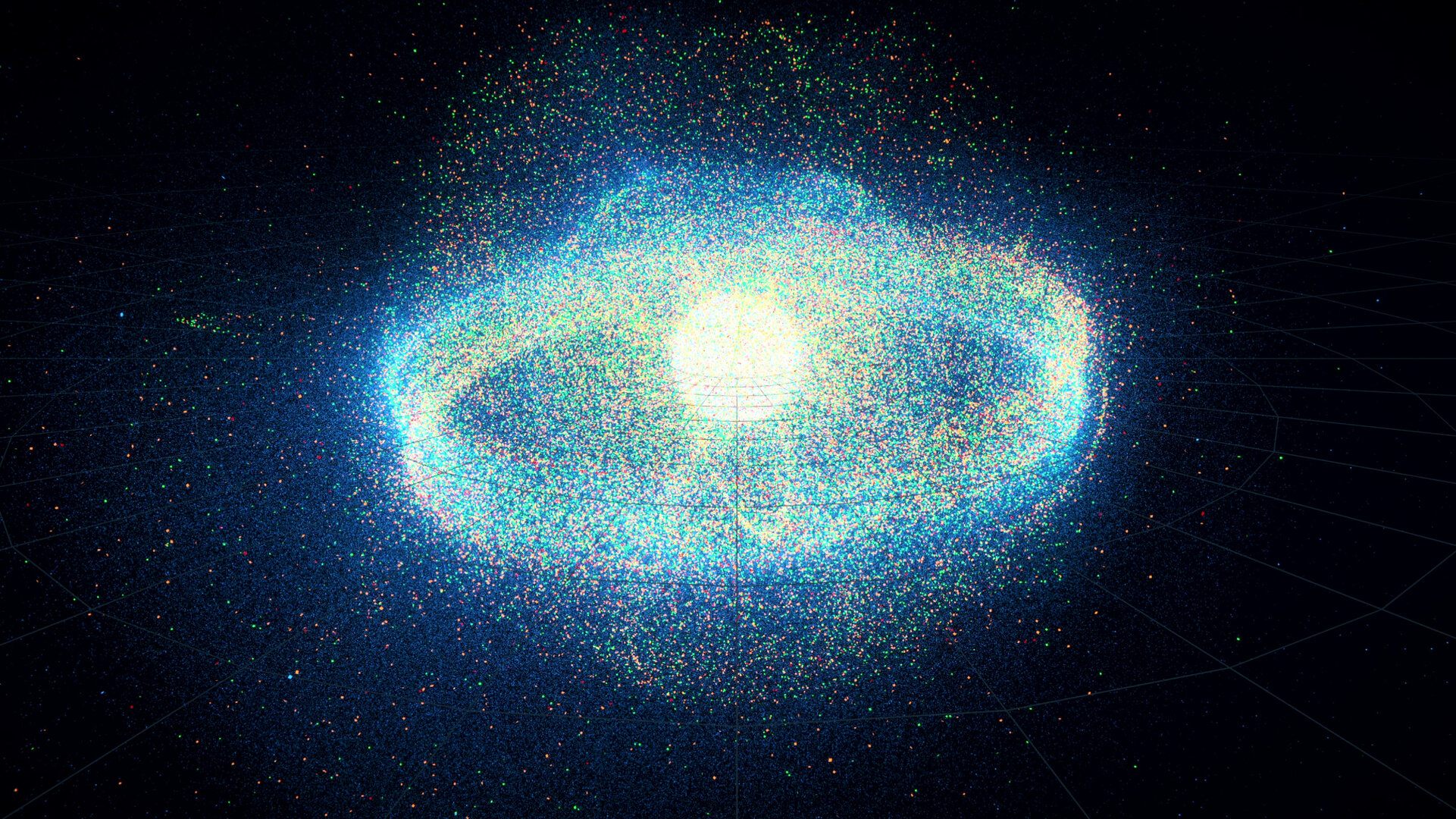
Access the video
Space is becoming increasingly useful, valuable and even essential to modern society. But we must ensure that it is not just the benefits that we extract from orbit, but also the waste.
Large pieces of space debris pose two types of risk: the short-term risk that they may collide directly with an active satellite, and the long-term risk that they may break down into a cloud of smaller pieces, each threatening to catastrophically damage a satellite.
Even if we launched nothing from now on, collisions among the space debris objects already in orbit would cause the problem to get worse.
Long term, increasing space activity could lead to “Kessler Syndrome” – the situation in which the density of objects in orbit is high enough that collisions between objects and debris create a cascade effect, each crash generating debris that then increases the likelihood of further collisions. At this point, certain low-Earth orbits will become entirely inhospitable.
So, what are doing about it?
Based on the findings of ESA’s yearly report and other studies, there is a growing consensus that we need stricter space debris mitigation practices.
ESA has recently introduced a Zero Debris approach, with the aim of ensuring the Agency’s activities generate no new space debris in valuable orbits by 2030.
The approach encompasses a number of developments related to Agency policy, technological advances and satellite operations that will strongly limit the generation of space debris.
For older pieces of debris, the only solution is “active debris removal”. ESA is purchasing the ClearSpace-1 mission as a service from the Swiss start-up ‘Clearspace SA’ to demonstrate the technologies needed for active debris removal and as a first step to establishing a new and sustainable commercial sector dedicated to removing high-risk objects from our valuable and limited orbital highways.
ClearSpace-1 will be the first mission to remove a piece of space debris from orbit. The spacecraft will rendezvous with, capture and safely bring down a 112 kg defunct rocket part, launched in 2013, for a safe atmospheric reentry.
Just like with the reentry of Aeolus, ESA seeks to demonstrate that a more sustainable approach is possible, even in challenging circumstances. The Agency hopes that by leading by example, it can encourage other space operators and manufacturers to adopt similar practices for the better of all.


